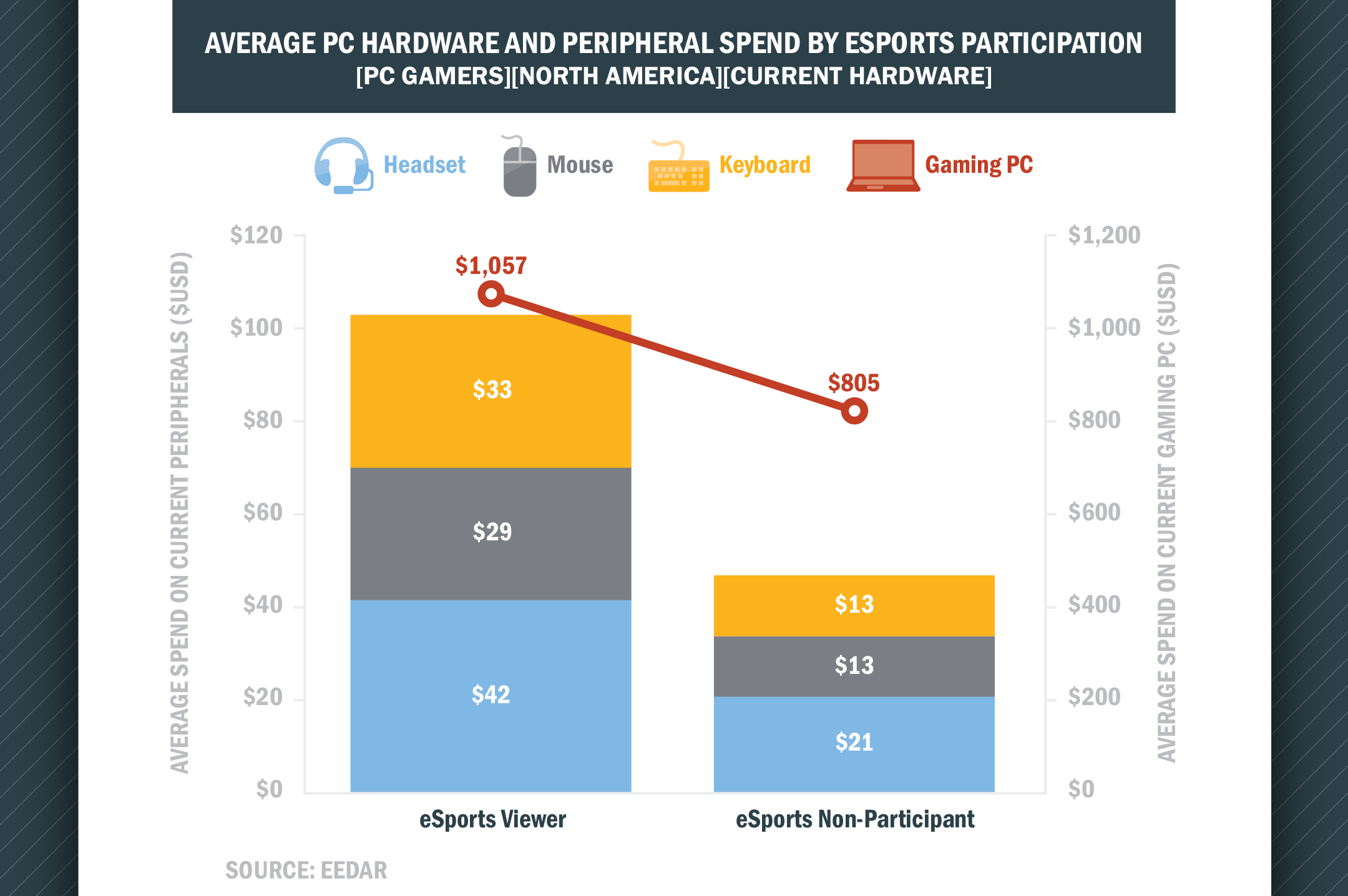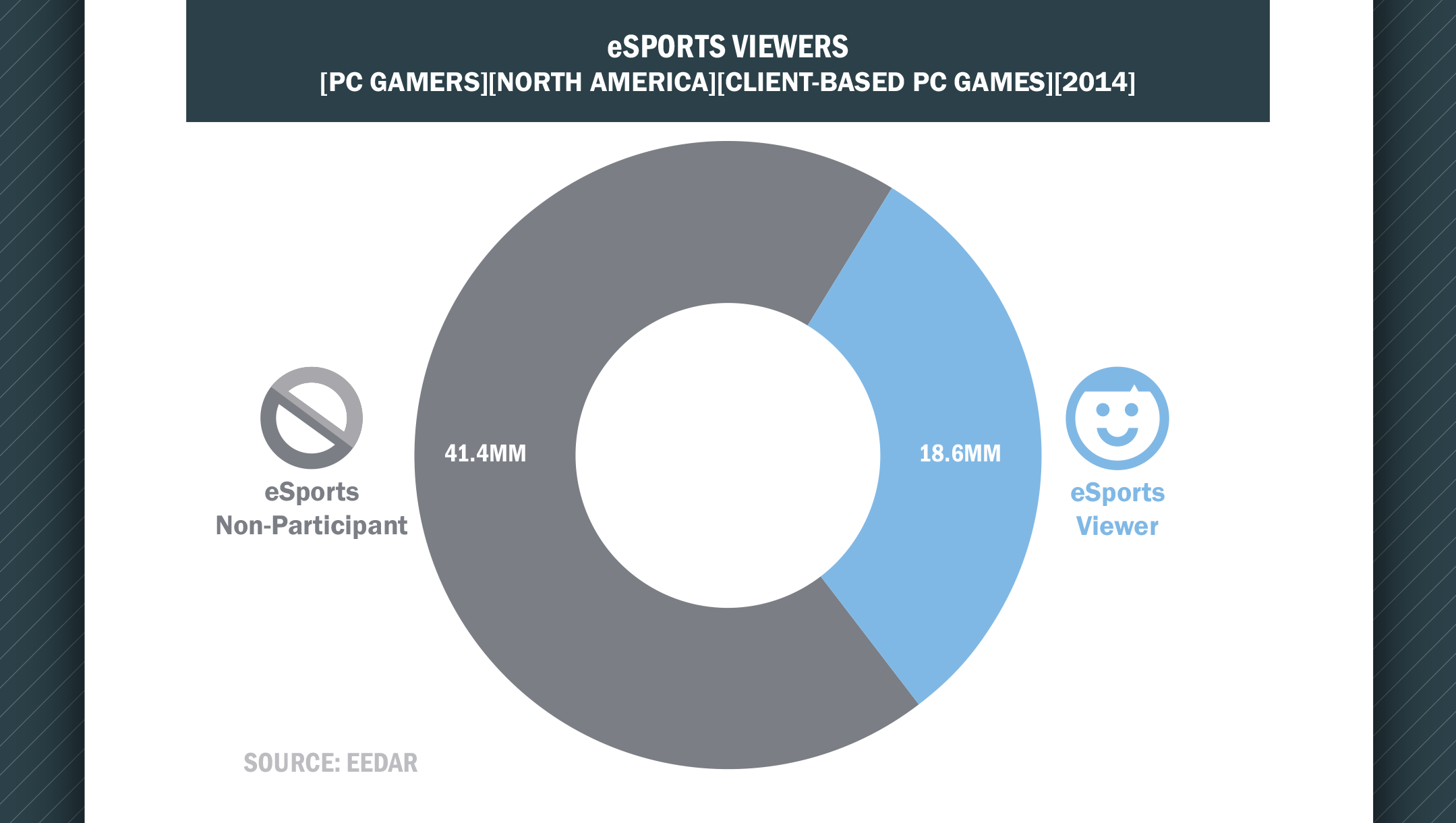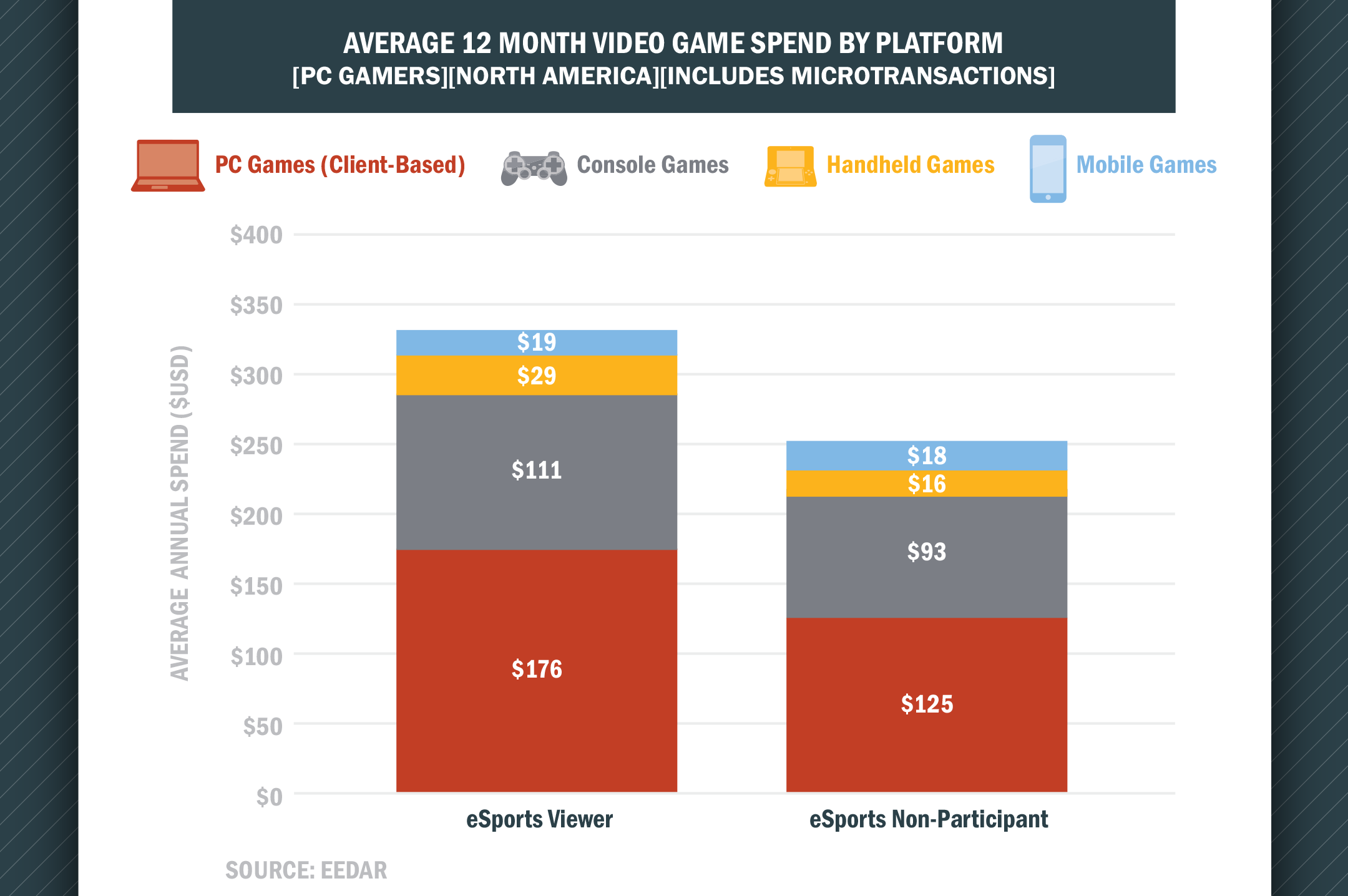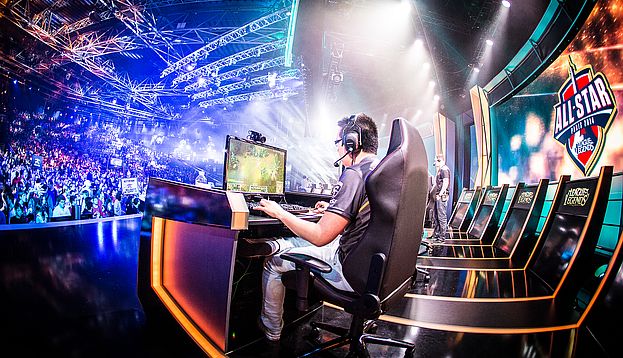Gamers are avid about eSports competitions, whether they’re aired on Twitch or on live television, like with Heroes of the Storm on ESPN 2 last month. However, along with attracting big audience members, it appears to be a hit on the advertising front as well.
GamesIndustry International reports that a new study by the EEDAR indicates that those who watch eSports spend more money on hardware and software than average gamers, mainly due to the involvement of quality gear from the likes of Razer, Origin PC and others.
With the significant growth in eSports participants and viewers year-over-year, the audience has seen impressive strength — which provides plenty of opportunity for peripheral makers to advertise their wares, as sponsors of said tournament or with advertising surrounding it. Devoted PC gamers are known to spend more on their gaming gear than regular gamers, since they require higher-performance goods from a variety of manufacturers to keep their habits at bay.

As you can see from the chart above, those who get more into eSports spend approximately $1,057 on gaming PC-related gear, compared to the $805 that an average gamer will spend. A majority of that money goes towards high-end equipment like keyboards, mice and headsets, and quality definitely makes a difference, especially with online rounds of games like Call of Duty and League of Legends.
Compared to average gamers, eSports fans spend more than twice as much on peripherals, and approximately 30 percent more on their system. Their overall spending reaches more than $100 for current peripherals, indicating that they’re fine with maximizing the performance of their rig.

The second chart shows that the market size of eSports viewers has managed to grow into a big chunk of the overall PC gaming population, and while it’s not yet at the halfway point of the overall count, it’s certainly getting there, taking up approximately 33 percent.

In addition to spending more money on their PC-related gear, eSports fans also spend more time across different gaming experiences, including various titles across platforms and genres alike, according to the above chart. PC games take a good chunk of their sending, approximately $50 more on PC games than most gamers, and $20 more on console games. Handheld and mobile games, however, are about steady across both groups.
The report also shows that major players in eSports, including game publishers, leagues and content distribution channels, have done a great job thus far keeping players involved with tournaments. Team-based tournament betting, in-game items created with team support in mind, merchandise and microtransactions to increase prize pools have also driven engagement to new heights as well. This, in turn, helps out tournament sponsors, building an audience that spends a great deal of money on these goods, as well as the hardware that makes them feel like they’re right there with the pros.
Look for this trend to roll on, as eSports continues to build popularity and eventually become a force to be reckoned with — maybe even compared to actual sports.

